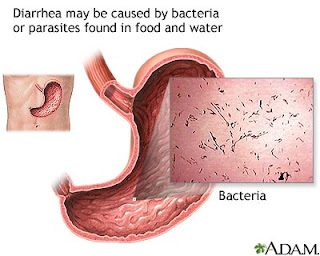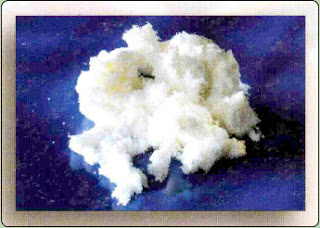
Antibiotics are interesting drugs. I think they are the only class of pharmaceutical agents that alternative medicine practitioners still consider beneficial. I have heard one naturopath refer to all other drugs as spawn of Satan, but I think that was a little harsh: I wouldn't exactly say "spawn." I'd say "love-child."
The reason for more alternative medicine practitioners to nod at the use of antibiotics, especially in times of disaster, is the speed by which antibiotics work when compared to natural antimicrobials. Natural medicines work much slower, taking weeks to months to accomplish what one medication will in a matter of days. Secondly, the occurrence of sexual assault, human bites, respiratory infections from dangerous soil bacteria, and some zombie bites ;-) most likely will increase during disastrous times.
As a result, sexually transmitted diseases (STDs) incidences will climb. Thus making certain antibiotics essential to have, especially those that treat Chlamydia (which can cause infertility, ectopic pregnancies, and pelvic inflammatory disease), Gonnorhea, Sypillis, Trichomonas, and any new infections that could arise in post-apocylptic situations.
In a nutshell, antibiotics are must haves. Where you get them from is your business, as long as they are from regulated pharmacies. I, personally, promote going to your preparedness-minded healthcare practitioner and explain your need for prepping with a few items, especially for travel purposes. You may get a good prophylactic prescription or two. Canada might also be a good option.

Another avenue that is popular among preppers is to acquire antibiotics from veterinary pharmacies. In fact, I have been asked a great question about animal antibiotics by a member of the American Preppers Network named Rightwing Mom. I decided to answer her here, just because it was such a good question. She asked concerning the safety and efficacy of veterinary-grade antibiotics in humans, especially fish and bird antibiotics. (
Image taken from http://www.petconnection.com/blog/2008/07/09/more-veterinary-drug-alerts-from-fda/. Also, there is a lot of good information on this site as well.)
The USDA and FDA regulate the antibiotics given to food-producing animals. Thus, the antibiotics given to cattle, for instance, are more likely to be safe and effective if used in humans, as opposed to those drugs given to non-food animals such as dogs, cats, and non-poultry birds. Fish antibiotics are still ambiguous to me. Fish farms do use them, but I am not exactly sure whether these are also under the same regulatory conditions as beef. It seems that they would be, but I still remain unsure.
In order to standardize animal pharmaceutical information, the University of California-Davis, North Carolina State University, and the University of Florida run the Food Animal Residue Avoidance Databank that provides label information for all food animal drugs, especially antibiotics. For more information on veterinary uses of human-grade antibiotics in food-producing animals refer to the FARAD site at
www.farad.org. (It also provides a warning news flash concerning radioactive fallout contamination of food-producing animals. I think that might be an interesting side note to look into.)
The FARAD site provides an algorithm concerning the safety of pharmaceuticals that are to be given to food-producing animals. This might be of interest to those that have thought of purchasing animal-grade antibiotics. I can not advocate this avenue, but if you do choose this route of obtaining medications, it is better that you understand all the precautions and safety issues out there.

Anyway, that being said, antibiotics are great drugs. They sometimes come at great prices, and unfortunately, they sometimes come at such high prices that your Piggybank craps its pants...because that little pig knows you're going to take a hammer to it just to get them. Third and fourth generation Cephalosporins are some of the best drugs, but they often come at a price. (
Image taken from eDrugSearch.com.)
For example, one of my favorite third generation Cephalosporins, Cefixime is nearly $300 per 100 milligrams. That's the same price as two sutures during a cardiovascular surgery. Yes, two small 5-0 sutures cost a patient approximately $150 a piece, which partially explains two things: one, why cardiac surgeries are so expensive and two, why sterile sutures are hardly ever seen in preparedness kits.
Anyway, the third and fourth generation Cephalosporins are the drugs you would buy at Tiffanys or Sax Fifth Avenue. In fact, some diamonds are probably cheaper than a IV bag of the fourth generation Cephalosporin called Cefepime.
Third generation Cephalosporins cover infections caused by gram negative bacteria, such as
Esherichia coli (which is responsible for the recent food poisoning outbreak in Germany),
Klebsiella,
Moraxella catarrhalis,
Niesseria species,
Pseudomonas, Enterobaceteriacae, and
Proteus, etc. They also cover gram positive bugs like
Staphylococcus and
Streptococcus.
The fourth generation is made up of one drug in the US. Yep, Cefepime IV is all by himself, lonely and... costly. This drug covers methicillin-sensitive
Staphylococcus aureus, all and I mean ALL gram negative bacteria. Cefepime may be a loner, but carries a big gun.
So let's start with the third generation drugs: They usually have a "tri", "taxi", or "tazi" in their name, with a few exceptions such as Cefdinir and Cefixime.
Ceftriaxone (Rocephin): Only administered intramuscularily or intravenously, Ceftriaxone is the drug of choice in doctor's office for one quick shot. This is a good drug for pneumonia, bronchitis,
Gonorrhea, Haemophilus influenzae, Serratia, acute ear infections, septicemia, bone and joint infections, meningitis,
Niesseria infections, pelvic inflammatory disease (PID), surgical prophylaxis, epididymitis, endocarditis prophylaxis, and Typhoid fever.
Adult Dosing: 1 to 2 gram IM/IV every 24 hours with a maximum of 4 grams per 24 hours.
Child Dosing: Not for neonates, especially those with hyperbillirubinemia. Children can be given 50 to 75 mg per kg body weight given once a day. The total daily dose should not exceed 2 grams.
Side Effects: Allergic reactions, watery diarrhea, and tea colored urine.
Ceftazidine (Tazicef): Also given IM/IV, Ceftazidine acts similar bacteria as Ceftriaxone, except not as much coverage.
Adult Dosing: 1 gram IM/IV every eight hours. This drug requires renal dosing adjustment to 500 mg per every 24 hours.
Child Dosing: Can be given to neonates less than 7 days old: 100 mg/kg/day divided every 12 hours. Older than 7 days old and greater than 1200 grams weight then give 150 mg/kg/day divided into eight hour doses.
Children one month to 12 years old are to be given 90 to 150 mg/kg/day divided into doses given every eight hours.
Side effects: Agranulocytosis, seizures, and
C. difficile diarrhea.
 Cefdinir (Omnicef):
Cefdinir (Omnicef): This Cephalosporin is given orally. Hallelujah! Finally, a third generation that can be eaten. Yum! It treats community-acquired pneumonia caused by
H. influenzae and
Strep Pneumoniae, and
Moraxella catarrhalis. It also covers acute exacerbations of chronic bronchitis, sore throats, sinusitis, ear infections, and skin infections caused by staph or strep.
Adult Dosing: 125 mg to 300 mg given orally every 12 hours. For instance, the treatment dose for pneumonia is 300 mg by mouth every 12 hours for 10 days.
Child Dosing: Can be given to children older than 6 months of age. The average dose is 14 mg/kg/day given by orally divided in 12 hour increments.
Side effects: This drug can has some nasty adverse effects. For instance, it cause Steven-Johnson Syndrome, toxic epidermal necrosis, neutropenia, hemolytic anemia, aplastic anemia, serum sickness, nephrotoxicity, and hepatotoxicity.
Cefixime (Suprax): I love the name of this drug: Ce- fix-i-me S'up-ra. (Which sounds a lot like "Say fix a me up, yo."). Another good oral medication, Cefixime treats urinary tract infections, ear infections, sore throats, Gonorrhea, and bronchitis.
Adult Dosing: 400 mg by mouth once a day. For regular gonococcal infections, 400 mg once will cure it. If the condition is disseminated gonorrhea then it will take 400 mg once a day for 6 days. Children 12 years old and greater than 50 kg in weight can be given the adult dosage.
Child Dosing: Can be given in children older than 6 months of age at dosing of 8 mg/kg/day in a single dose by mouth.
Side effects: Erythema multiforme (big red spots all over your body so that your friends can nick name you spot), Steven-Johnson-Syndrome, and hemolytic anemia. Keep in mind these are rare.
Cefepime (Maxipime): Here's our fourth generation loner that lives in his basement and never comes out unless there is a great need for his superhero-big-gunness: Cefepime's mother often wonders if he will become the next Uni-bomber. Only administered by IV/IM, Cefepime is usually for complicated urinary tract infections, kidney infections, used for immunocompromised patients as infection prophylaxis, skin infections, and complicated intra-abdominal infections.
Adult Dosing: 1 gram to 2 grams by IV/IM every 8 to 12 hours.
Child Dosing: Can be given in children older than 2 months of age at doses of 50 mg/kg every 12 hours.
Side effects: Encephalopathy, leukopenia, hemorrhage, and aplastic anemia.
For all those of my regular followers that were expecting my usual absurd humor, I have to admit that I am so tired that my serious doctor mode has come out. I know, it's sad. Why did I have to be trained to be serious? But yes, it does happen. ;)
Hope you enjoyed the Cephalosporins. Next time: the Marvelous Macrolides.
TTFN.




 Prickly-ash tree bark for oral analgesic. The Prickly-ash tree, also called Zanthoxylum americanum, is a shrub/tree that bears throny branches, aromatic leaves, and a seriously kicking analgesic bark.
Prickly-ash tree bark for oral analgesic. The Prickly-ash tree, also called Zanthoxylum americanum, is a shrub/tree that bears throny branches, aromatic leaves, and a seriously kicking analgesic bark.

































